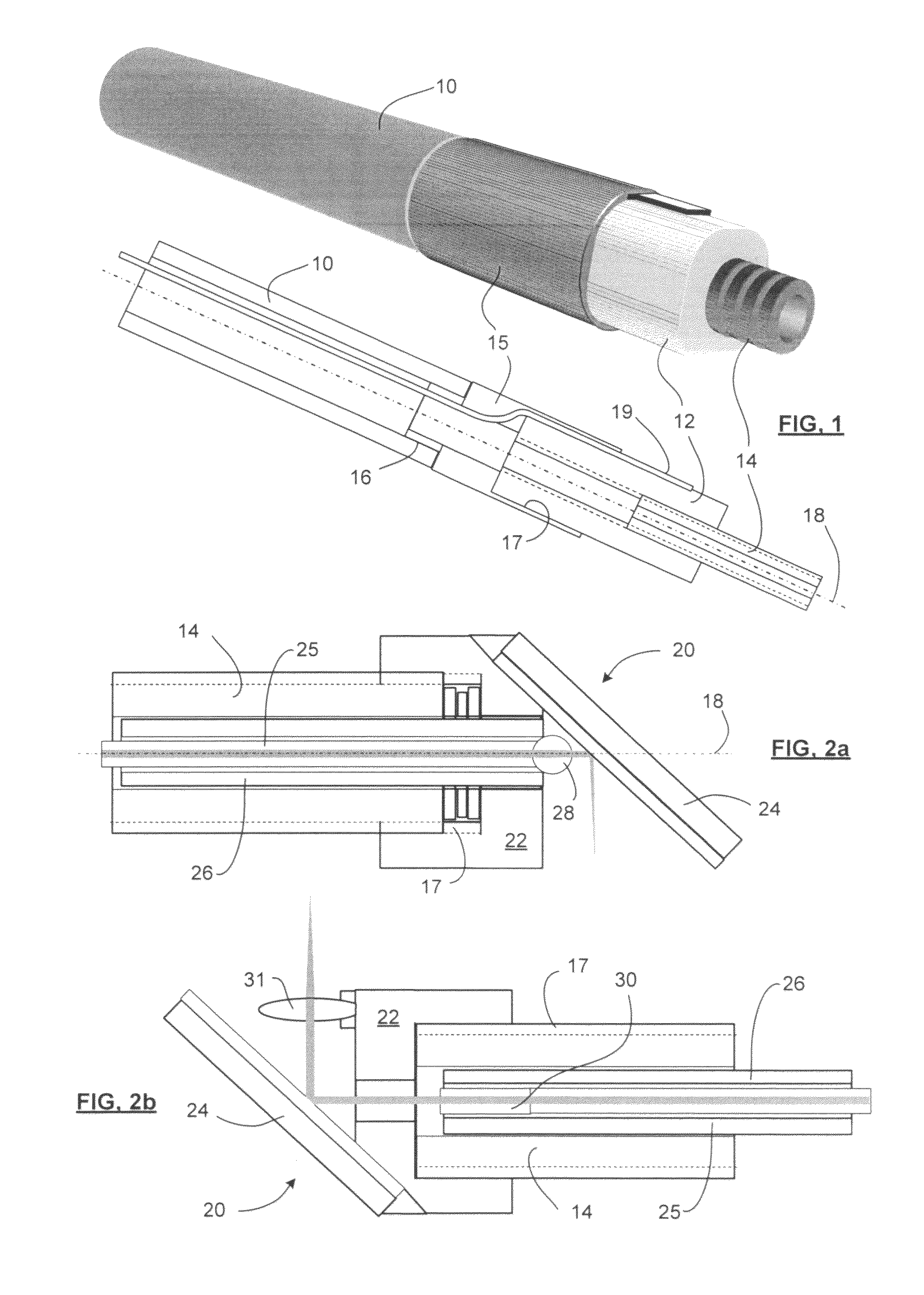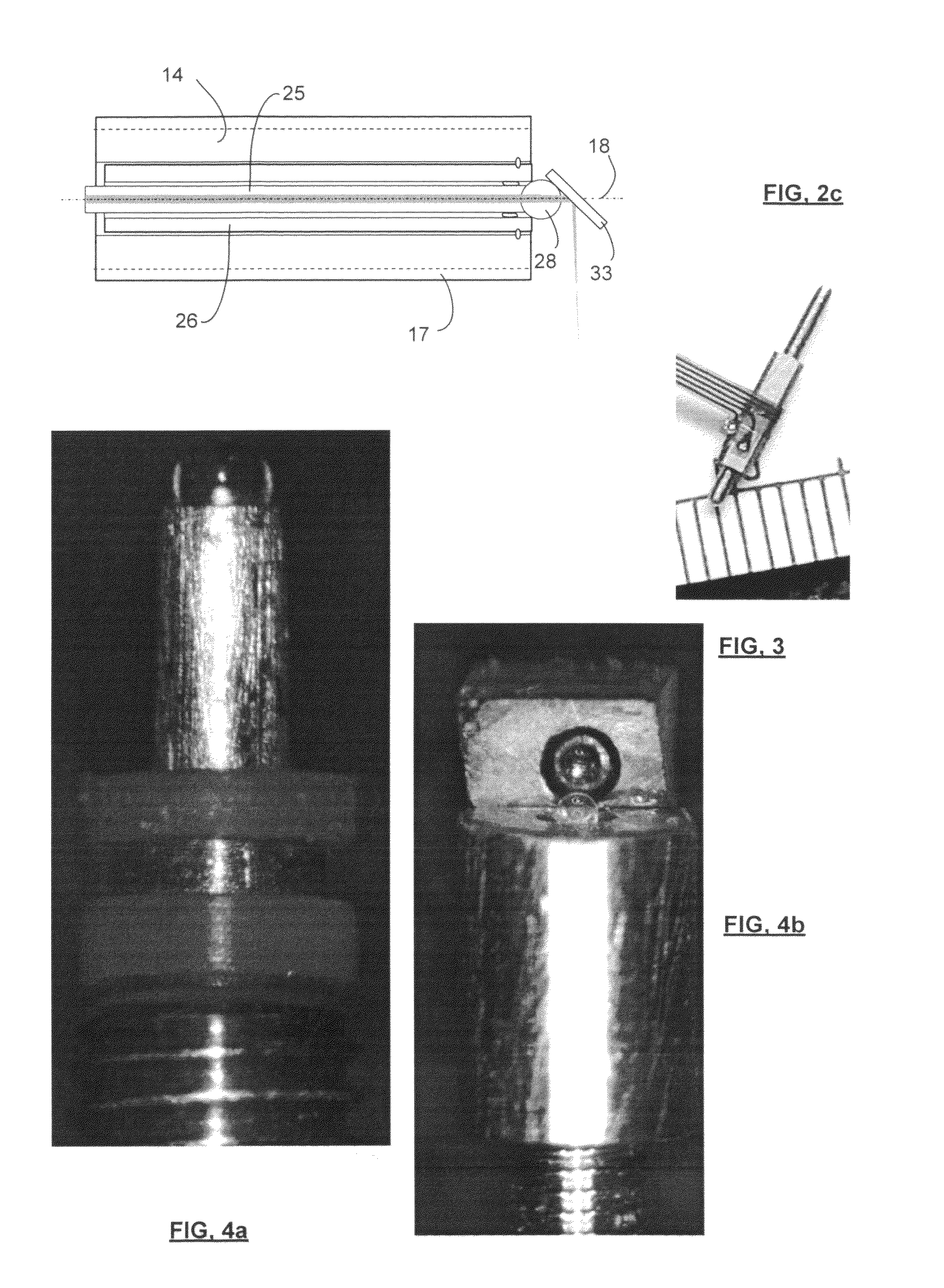Optical catheter with rotary optical cap
a technology of optical caps and optical catheters, applied in the field of optical catheters, can solve the problems of non-uniform rotational distortion, scanning errors during measurement, and almost impossible post-processing calibration and compensation
- Summary
- Abstract
- Description
- Claims
- Application Information
AI Technical Summary
Problems solved by technology
Method used
Image
Examples
examples
[0032]A prototype device has been produced. A commercially available miniature rotary motor, squiggle motor (outer diameter 1.8 mm, as shown in FIG. 3, shaft outer diameter 1.1 mm, thread pitch 0.16 mm) was obtained from New Scale Technologies (Victor, N.Y.). FIG. 3 is an image of the squiggle motor. Other squiggle motors, including some with smaller shaft OD (e.g., 1.5 mm are commercially available). A threaded shaft of the miniature motor was bored to produce a through hole along its centre axis with an inner diameter of 0.4 mm. This proved difficult, but the details are not provided here, as hollow shafts, even of these dimensions, can be provided in a variety of ways known in the art by forming techniques that are expected to be easier than boring an axial hole through a solid shaft as done in the present instance.
[0033]A fibre with a protective steel sheath was obtained from (SMF-130V, Prime Optical Fiber Corporation), having an OD of 0.125 mm. The fibre had a ball lens formed ...
PUM
 Login to View More
Login to View More Abstract
Description
Claims
Application Information
 Login to View More
Login to View More - R&D
- Intellectual Property
- Life Sciences
- Materials
- Tech Scout
- Unparalleled Data Quality
- Higher Quality Content
- 60% Fewer Hallucinations
Browse by: Latest US Patents, China's latest patents, Technical Efficacy Thesaurus, Application Domain, Technology Topic, Popular Technical Reports.
© 2025 PatSnap. All rights reserved.Legal|Privacy policy|Modern Slavery Act Transparency Statement|Sitemap|About US| Contact US: help@patsnap.com



